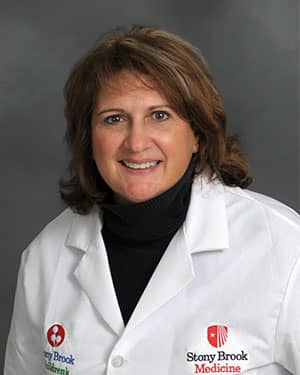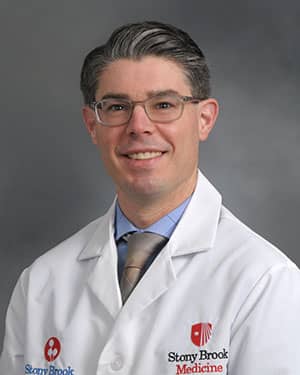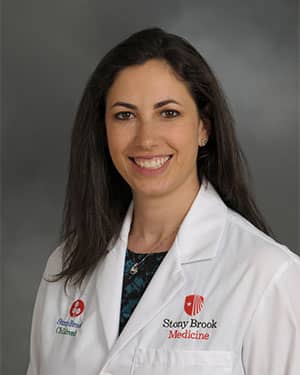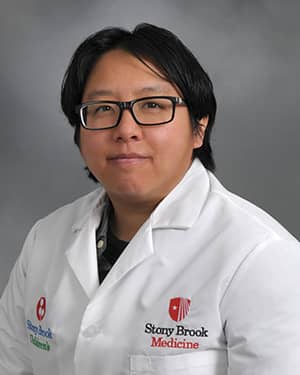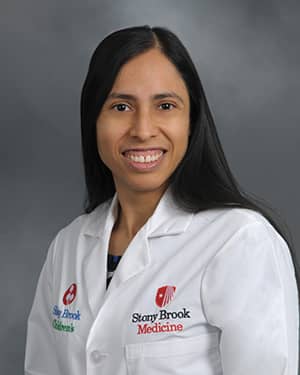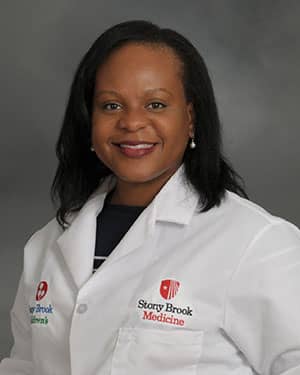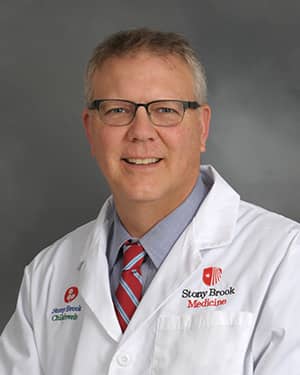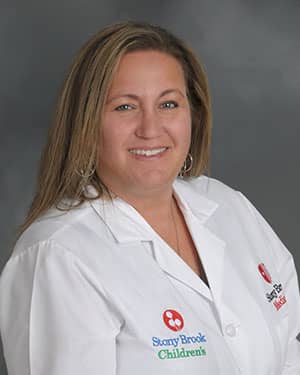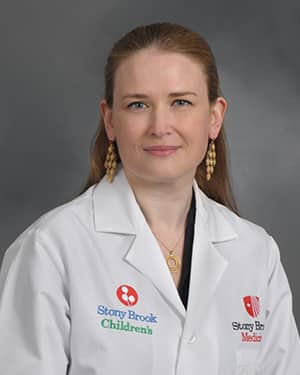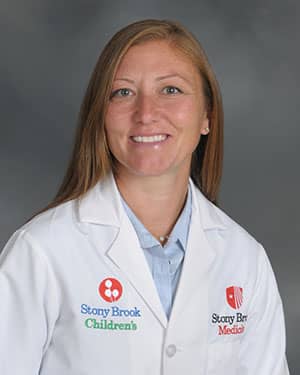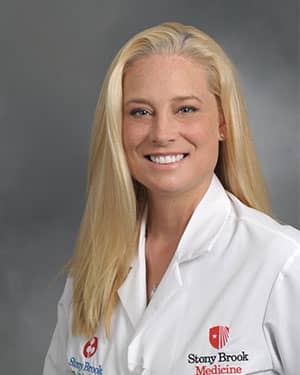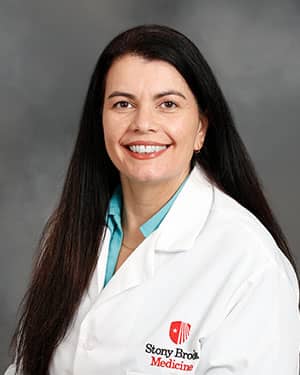Navigation Critical Care
Pediatric Critical Care
Quality pediatric critical care is at the heart of Stony Brook Children’s. Our 10-bed Pediatric Intensive Care Unit (PICU) provides the region’s most advanced family-centered critical care to Suffolk County’s most seriously ill and injured children.
Approximately 700 patients — many of whom are transferred to us from other hospitals — are admitted to Stony Brook Children’s PICU each year.
Problems that may need critical care include complicated pre- and post-surgical care, injuries from accidents, serious infections and severe breathing problems. Patients can range in age from infants to 21 years.
Services
While in our PICU, all patients receive close, constant attention from a team of specially trained health professionals overseen by attending pediatric intensivists — physicians specializing in the delivery of critical care to children. These pediatric intensivists are at Stony Brook 24/7.
Critical care today involves high technology support including continuous dialysis; ventilator care including the availability of a high frequency ventilator; administration of nitric oxide; and support for kidney transplants. Continuous, state-of-the-art monitoring is standard practice. Support and treatment of patients in heart failure, breathing failure, acute kidney injury, severe neurologic disease or injury, or severe trauma is our specialty. At Stony Brook Children’s, pediatric intensivists support both the inpatient and outpatient facilities when sedation is required for a child undergoing painful procedures.
Our Team
The Pediatric Intensive Care Unit is led by Katharine V. Biagas, MD, FCCM, FAAP. Pediatric Critical Care Medicine is a complex and highly sophisticated branch of medicine that provides comprehensive care for critically ill or injured infants and children. A strong multidisciplinary team of pediatric subspecialists, nurses, respiratory therapists and other therapists (speech, occupational and physical), pharmacists, child life specialists and social workers all work collaboratively to restore health to the sickest children. In total, the PICU has about 60 specially trained staff nurses caring for patients. Physicians throughout Stony Brook Children’s interact and collaborate with the PICU.
Ten board-certified pediatric intensive care physicians and three specialty nurse practitioners oversee and coordinate all the members of each child’s care team.
Locations
Research and Education
Research
Current research in the Division of Critical Care Medicine focuses on improving care and outcomes of critically ill infants and children. Faculty members publish in prominent medical journals and textbooks in the field. Several physicians in the division lead or participate in important clinical studies. These include:
- NEAR4KIDS Study to improve the safety of endotracheal intubation
- Numerous Quality Improvement programs to enhance safety of medication delivery and administration
- Long-term neurobehavioral, quality of life, and functioning in PICU survivors
- Family functioning after PICU care
- Transitions from ICU to home-based care
- Use of digital technologies to advance patient care
- Diversity and inclusion in medicine
- Enhancing clinician well-being and flourishing
- Enhancing learning through simulation
- Mobilization of patients to enhance hospital care and early discharge
Learn more about Pediatric Critical Care Medicine faculty research:
Education
Current education efforts focus on residents and medical students who learn to care for the sickest patients in the hospital during 4-week clinical experiences. Typically, several residents work in the unit per month, a combination of second- or third-year pediatric residents and second-year emergency medicine residents. Third- and fourth-year medical students also experience learning opportunities in the PICU.
Learning focuses on understanding the complex pathophysiology of critical illness while also caring for patients and their families in a compassionate and comprehensive fashion.
Pediatric Critical Care Medicine faculty members also teach their colleagues and other professionals Pediatric Advanced Life Support (PALS) courses.
Advances and Recognition
Critical Care faculty provide real-time, hands-on Pediatric Advanced Life Support (PALS) training for pediatric residents, colleagues and staff.
To improve performance and outcomes, a Pediatric Simulation Program is offered in the Stony Brook University School of Medicine's Clinical Skills Center. The program creates mock pediatric emergencies requiring resuscitations of computerized patient mannequins. Student and resident doctor reactions can be recorded, measured and evaluated using advanced equipment.
Patient Resources
Family-centered care is especially important in the Pediatric Intensive Care Unit (PICU).
Parents are permitted and encouraged to stay with their child in the PICU 24 hours a day. Fold-out beds and en suite showers are in the patient rooms. There is a Ronald McDonald House-sponsored Parent Respite Room that provides food and support services for families.
Communication is the core of family-centered care and the PICU invites parents to join physician rounds to learn more about the care plan and their child's progress. Parents are welcome to talk with their child's attending physicians, nurses, and other health professionals at any time. Families are encouraged to assist in providing bedside care for their child.
Child Life Services specialists are also available to PICU patients and families.
Definitions
A procedure involving a light and tiny camera threaded through the nose or mouth to look inside the lungs’ airways, treat bleeding or remove stuck objects.
Also called intensive care, critical care is provided when patients have life-threatening injuries or illnesses. It usually takes place in a dedicated Intensive Care Unit, Critical Care Unit or trauma center. Units may specialize in a particular type of critical care or patient – for example, Neonatal Intensive Care (for babies immediately following birth); Pediatric Intensive Care (for newborns who have been discharged and then return to the hospital, up through adolescence and even young adults if congenital issues are involved); Coronary Critical Care (following heart surgery or heart attack); or a Surgical Intensive Care Unit (following surgery). Monitors, IV tubes, catheters, ventilators and other equipment are commonly used in intensive or critical care units.
When the kidneys fail, dialysis helps do their job of filtering the blood to rid the body of harmful wastes, extra salt and water.
A procedure to place a breathing tube through the mouth into the trachea, to assist the patient with breathing using a ventilator.
When a person cannot eat or has difficulties swallowing because of an illness, injury or surgery, enteral nutrition or tube feeding may be helpful. A special liquid food mixture is provided through a tube that may be placed through the nose or directly through the skin into the stomach or bowel.
A physician with subspecialty training in critical care.
A tiny intravenous tube is placed by needle into a vein or artery to deliver medications, fluids or pain controlling drugs.
Nitric oxide is a gas added to the oxygen in a ventilator to help blood vessels in the lungs dilate and allow more blood flow and oxygen to the lungs.
A physician with subspecialty training in pediatrics and in critical care.
Also known as a respirator, a ventilator is a machine that helps people breathe.

